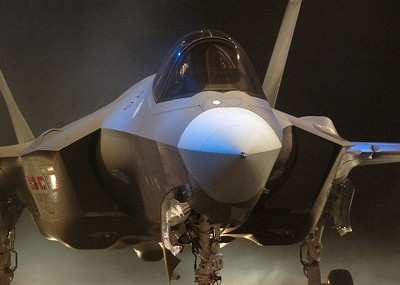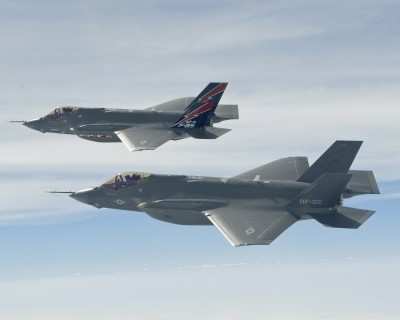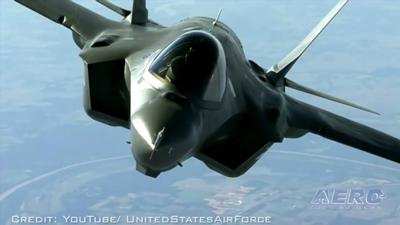Lightning II Reliably Unreliable
The United States Air Force (USAF), in 2021, conducted the TacAir study, an investigative enterprise that examined the tactical requirements of U.S. combat aircraft in future conflicts.

The study’s results compelled Air Force chief of staff General Charles Q. Brown to concede the F-35 program had failed to achieve its goals. General Brown further set forth that little reason existed to believe the F-35 platform would ever deliver on its designer’s promises.
Comes now 2023, and the F-35 variant operated by the U.S. Air Force is flying less frequently than the service’s F-15E Strike Eagles—which were developed during the Reagan administration of the 1980s.
Over the seventeen-years since the F-35’s 2006 entry into U.S. service, the F-15E fleet has consistently demonstrated a dispatch availability twice that of its F-35 Lightning II counterpart. So states a recently published report by the nonpartisan Congressional Budget Office (CBO).
The CBO report showed the mission capable rate for the Air Force’s F-35A fleet fell 11-percent between 2021 and 2022. The mission capable rate for the U.S. Marine Corps’ F-35B fleet dropped by seven-percent over the same time-period. The U.S. Navy’s F-35C fleet, however, saw a five-percent rise in dispatch availability—to a less-than-stellar 58-percent.
According to the CBO report, availability of all three F-35 variants, in 2022, ranged from a dismal 54% to an only-slightly-less-dismal 58%.

The $1.7-trillion F-35 program is the most expensive military undertaking in the history of humankind. The First and Second World Wars combined cost American taxpayers $320-billion, a mere 18-percent of the F-35’s total program costs. Notwithstanding its epic, eye-watering price-tag, the F-35’s lack of availability has occasioned supposition among Pentagon brass that the advanced, sixth-generation aircraft will never become the workhorse machine it was envisioned to be. Instead, the Lightning II—after the fashions of Vought’s F-7U Cutlass and Convair’s B-58 Hustler—may well wind up an overpriced, temperamental embarrassment relegated to nice roles at the periphery of U.S. national defense.
Bryan Clark, director of the Hudson Institute’s Center for Defense Concepts and Technology, stated the F-35’s ballooning costs have prompted the U.S. Air Force, Marine Corps, and Navy to reexamine their planned purchases.
The $1.7-trillion projected cost of the F-35 program covers the development, construction, and maintenance of 2,500 F-35s of the A, B, and C subtypes. Comparatively, the F-16 Falcon program—which since 1978 has provided north of four-thousand specimens of the agile fighter to the U.S. and 28 of its allies—has rung-up an approximate total cost of $18.7-billion, a figure equivalent to 1.1-percent of the F-35 program’s cost.
Military analysts at the Hudson Institute and elsewhere—to include the Pentagon—posit the F-35’s tab could challenge the U.S. Department of Defense’s (DOD) ability to adequately fund priority assets such as Northrop-Grumman’s recently unveiled B-21 strategic bomber and the USAF’s Next Generation Air Dominance (NGAD) initiative, which seeks to field a "family of systems"—primarily a manned fighter aircraft—by which Lockheed-Martin’s F-22 Raptor will be succeeded.
The F-35, according to the CBO report, is beset by design and functional woes, the likes of engines that wear out prematurely and maintenance delays attributable to shortages of replacement parts. The report also disclosed that the F-35’s mission capable rate has fallen sharply as the fighter ages. Even the inordinately complex F-22 Raptor’s mission capable rate of approximately seventy-percent is markedly better than that of the F-35.
“The services are all looking for alternatives that allow them to reduce their flight hour costs and then husband their F-35s for … high-end missions that are less frequent than the day-to-day flying,” Mr. Clark stated.
Advocates of the F-35—many of whose incomes depend on the jet’s continued sales to the DOD—contend comparisons of the Lightning II to older aircraft are flawed insomuch as the 450 F-35s produced to date are “being flown harder and aren’t being replaced with newer versions.”
Heather Penney of Arlington, Virginia’s Mitchell Institute for Aerospace Studies argues: “If you don’t have a chance to divest the very, very early (F-35) models because you don’t buy enough or you don’t buy them fast enough, you’re going to see that reflected in availability rates.”

Ms. Penney fails to take into account that the very, very, early F-35s are less than half the age of the selfsame F-15Es by which the newer jet’s mission capable rate is soundly trounced. Ms. Penny fails, also, to make mention of the fact that in 2022, the F-15E’s mission capable rate was a spiffy 95.5-percent.
Divestment schedules, in any case, ought have no impact on the combat readiness of in-service, regularly flown and maintained aircraft. Furthermore, aircraft lifespans are measured more so in hours flown than years extant—as even the most casual perusal of aircraft maintenance schedules will reveal.
Ms. Penney nevertheless advocates that the Air Force buy as many F-35s and spare parts as quickly as it can, stating: “When we hit the late 2020s and the early 2030s, we will have a significant demand on the Air Force to replace legacy platforms that really have already served longer than they should have.”
Still, U.S. military services are currently prioritizing the upgrading of legacy platforms. The USAF, for example, has committed to purchasing as many as two-hundred F-15EX Eagle II jets, which—for the foreseeable future—will function as the backbone of the service’s fighter force.
What’s more, the Pentagon, in 2023, has chosen to acquire only 33 of the 44 F-35s for which Congress approved funding—opting, instead, to allocate the residual monies otherwise.
Speaking to the subject of the CBO report’s documentation of the F-35’s shortcomings, Daniel Norton, a senior management systems analyst at the Rand Corp., a California-based think tank, stated, “Those trends are problematic but could improve as more planes are delivered and upgraded.”
“But there are no guarantees,” Mr. Norton added.
 ANN's Daily Aero-Term (04.24.24): Runway Lead-in Light System
ANN's Daily Aero-Term (04.24.24): Runway Lead-in Light System ANN's Daily Aero-Linx (04.24.24)
ANN's Daily Aero-Linx (04.24.24) Aero-FAQ: Dave Juwel's Aviation Marketing Stories -- ITBOA BNITBOB
Aero-FAQ: Dave Juwel's Aviation Marketing Stories -- ITBOA BNITBOB Classic Aero-TV: Best Seat in The House -- 'Inside' The AeroShell Aerobatic Team
Classic Aero-TV: Best Seat in The House -- 'Inside' The AeroShell Aerobatic Team Airborne Affordable Flyers 04.18.24: CarbonCub UL, Fisher, Affordable Flyer Expo
Airborne Affordable Flyers 04.18.24: CarbonCub UL, Fisher, Affordable Flyer Expo





